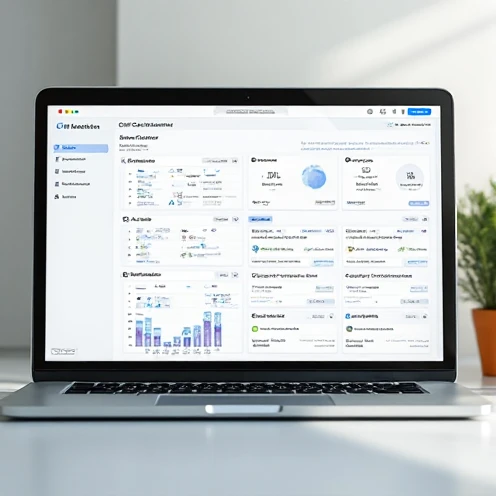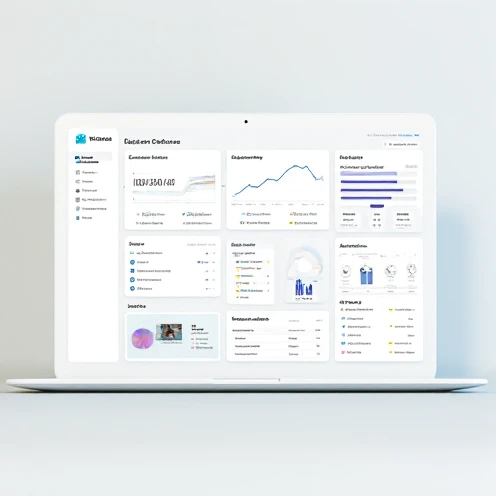A Game Changer in the Financial World
In today’s rapidly evolving financial landscape, CRM Banking has become more than just a trend. It is a powerful tool that helps banks understand, connect, and build stronger relationships with their customers. Unlike traditional banking systems that focus primarily on transactions, CRM Banking emphasizes long-term customer engagement, loyalty, and satisfaction.
By implementing CRM systems tailored for banking, financial institutions can streamline processes, improve service quality, and deliver personalized experiences. This customer-centric approach not only boosts retention but also creates opportunities for cross-selling and upselling, which directly supports revenue growth.
Iklan Google AdSense
Why Banks Need CRM for Survival
Banks operate in one of the most competitive industries in the world. With fintech startups and digital banks on the rise, customer expectations are changing quickly. CRM Banking allows traditional banks to adapt by offering digital-first experiences while maintaining personal connections.
Moreover, the data-driven insights provided by CRM systems help institutions identify customer needs in real-time. This makes it possible to deliver the right services at the right time, which is essential in a fast-paced market.
Understanding the Core Benefits of CRM Banking
One of the primary advantages of CRM Banking is efficiency. Banks can automate repetitive tasks, reduce errors, and free up staff to focus on building meaningful client interactions. This not only saves time but also improves overall productivity.
Another significant benefit is personalization. With CRM tools, banks can analyze customer behavior, spending patterns, and preferences. As a result, they can create tailor-made offers, boosting customer satisfaction and loyalty.
Enhancing Customer Experience with CRM Tools
Customer experience is the heart of modern banking. Through CRM Banking, institutions can map customer journeys, track every interaction, and identify areas for improvement. Transitioning from generic services to personalized solutions helps banks stand out in a crowded marketplace.
In addition, CRM systems provide unified dashboards that give employees a 360-degree view of each customer. This makes every interaction more informed, relevant, and effective.
CRM Banking and Digital Transformation
The global shift toward digital banking has accelerated the adoption of CRM solutions. Customers now expect seamless mobile apps, online transactions, and instant support. CRM Banking bridges this gap by integrating multiple channels into one system, ensuring consistent service across digital and physical platforms.
Furthermore, CRM systems support integration with AI-powered chatbots, predictive analytics, and automated workflows. This synergy improves both efficiency and customer satisfaction, making banks more agile and future-ready.
Data Security and Trust in CRM Banking
One of the biggest concerns in the digital age is data security. Customers need assurance that their personal and financial information is safe. CRM Banking systems are designed with advanced security features such as encryption, access controls, and compliance tools to protect sensitive data.
By investing in secure CRM platforms, banks can build trust and reassure customers that their information is handled responsibly. This trust directly influences long-term loyalty and engagement.
Driving Sales and Marketing Through CRM
Banks are not only service providers but also product marketers. From credit cards to investment packages, marketing plays a crucial role. Customer Relationship Management Banking helps segment customers based on demographics, financial behavior, and needs, making campaigns more effective.
In addition, CRM systems track campaign performance, allowing banks to adjust strategies in real-time. This leads to higher conversion rates and stronger customer acquisition strategies.
The Role of Analytics in CRM Banking
Analytics is the backbone of modern Customer Relationship Management Banking. With predictive analytics, banks can anticipate customer needs before they are expressed. For example, if a customer frequently travels, the bank might suggest a travel rewards credit card.
Such proactive recommendations not only improve customer satisfaction but also enhance the bank’s profitability. This data-driven approach ensures that decisions are based on facts rather than assumptions.
Challenges in Implementing CRM Banking
Despite its many benefits, Customer Relationship Management Banking comes with challenges. High implementation costs, resistance to change, and the need for staff training can slow down adoption. However, these challenges are not insurmountable.
With proper planning, clear communication, and phased implementation, banks can overcome obstacles and maximize the value of their CRM investments.
The Future of CRM Banking
Looking ahead, Customer Relationship Management Banking will become even more advanced. Integration with artificial intelligence, blockchain, and machine learning will enhance predictive capabilities and security measures. These innovations will allow banks to deliver hyper-personalized services while maintaining compliance and trust.
Ultimately, CRM Banking is shaping the future of financial services. It empowers institutions to be customer-centric, data-driven, and digitally ready for the challenges ahead.
Iklan Google AdSense


